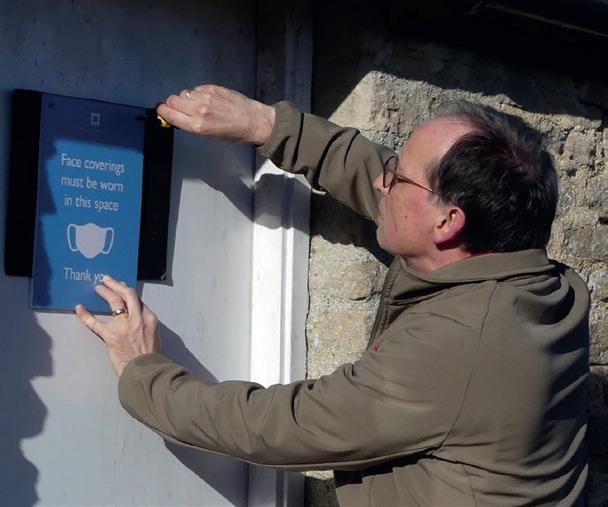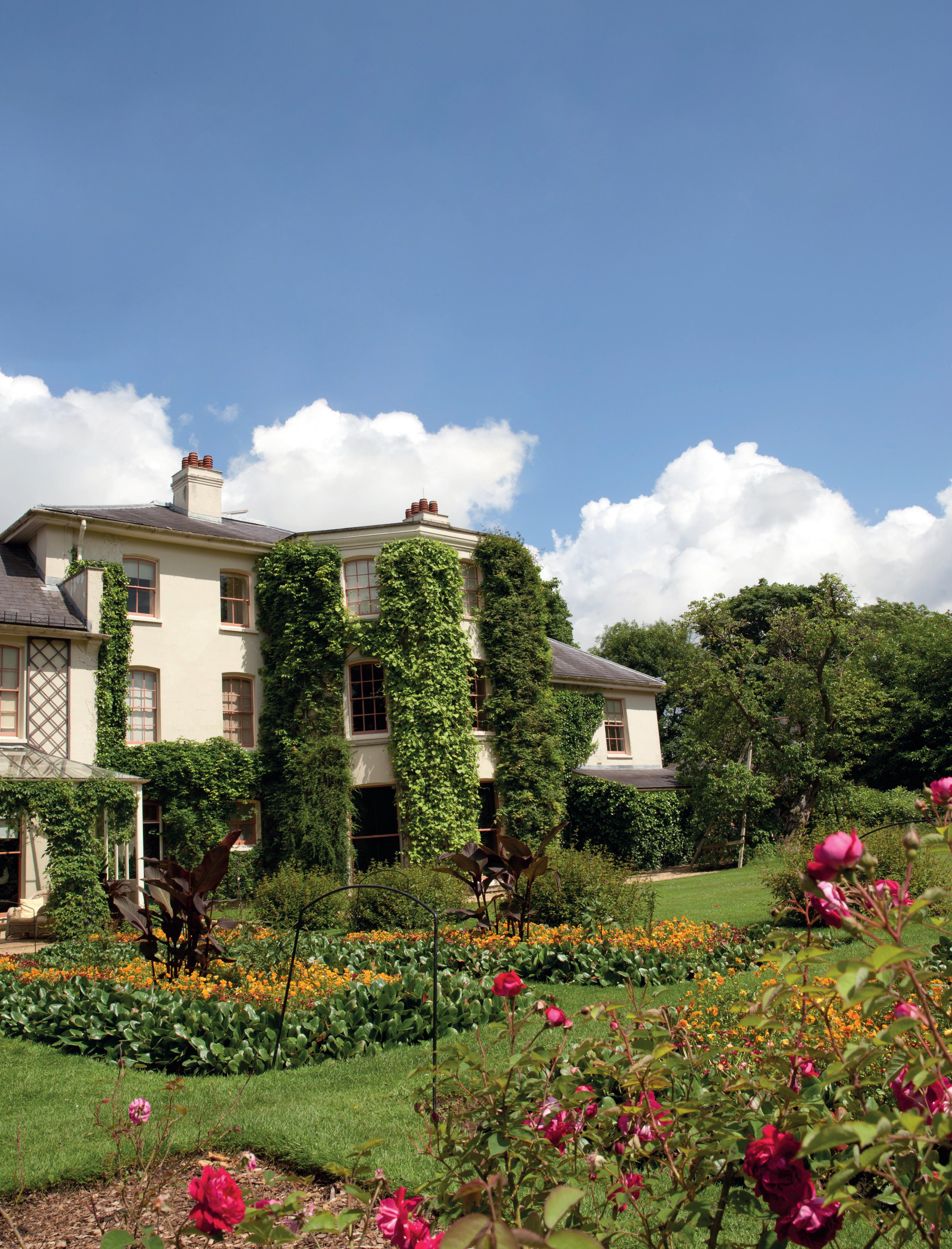
6 minute read
WE DID IT
PLAN YOUR VISIT You can find out more about this free-to-enter site by visiting www.english-heritage.org.uk/visit/places/north-leigh-roman-villa
WE DID IT!
UNLOCKING OUR MOSAIC
Matthew Lee explains how North Leigh Roman Villa volunteers brought a mosaic out of its 30-year lockdown in the summer of 2020.
North Leigh is one of the largest courtyard villas to survive from Roman Britain. Its beautiful fourth-century mosaic was opened to visitors last summer thanks to the efforts of local volunteers. A new group of volunteers formed at North Leigh in the summer of 2019 with the simple aim of safely helping more people to enjoy the villa’s mosaic, which has been protected by English
Heritage but locked away for the past three decades.
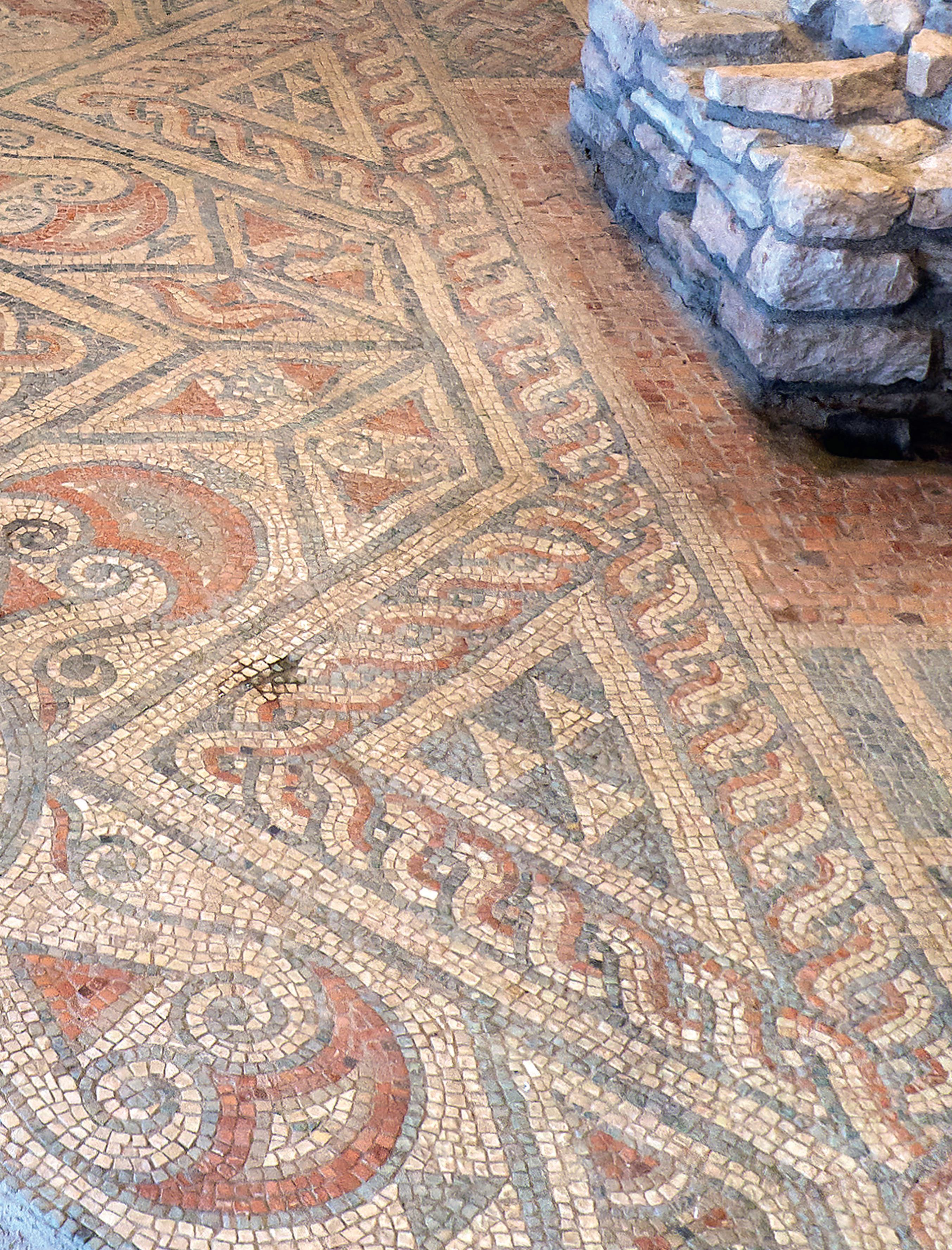
Making the most of our Roman mosaic 2020 was quite a year for the North Leigh Roman Villa volunteers to try to get a full season of mosaic openings up and running. Perhaps it was a good thing we were so inexperienced, as often we didn’t know what we didn’t know, so not much has daunted us (so far).
A Covid-secure venue As restrictions started to ease in July, English Heritage applied their Covid safety risk assessment to our site, turning it into a ‘Covid-secure venue’ – we still called it ‘the villa’. We quickly agreed a simple system for access to the mosaics: household groups in timed slots, using numbered raffle tickets to control admissions.
A rehearsal on site gave our team of volunteers confidence it could all work. Even when it was announced that face masks would be required inside buildings, with barely a week’s notice before our first opening, we were able to spread the word on social media and, with English Heritage’s help, via the website and posters on site.
Libations to the weather gods worked We were very fortunate with the weather: every one of our three open weekends, and handful of special openings for local primary schools and clubs and societies, were sunny and dry. So at least the libations to the weather gods worked.
We were delighted that safe arrangements allowed some of our ‘Friends of the Villa’ to join volunteers in the mosaic cleaning on our final open weekend. Visitors found this mosaic deep-clean fascinating.
Feedback from visitors We were encouraged by the feedback from visitors.
‘This is one of the most safe and well-thought-out set of procedures I have met since this virus situation began so have every confidence all will go well. Thank you for your hard work on this.’
‘The clean-up days were brilliantly organised with details sent beforehand and friendly support and information given at the time. Volunteers organising the days were brilliant. I greatly admire their enthusiasm and initiative and the meticulous care they took especially over Covid precautions whilst still retaining a friendly and inviting environment. There was a good sense of community spirit in caring for the history on our doorstep. The experience will stay with me for a long time.’
Achievements The results achieved by our group of two dozen volunteers speak for themselves: ■ more than 1,250 people saw the mosaics in 2020 (nearly double 2019’s total); ■ donations were up six-fold on 2019 to nearly £950; ■ our ‘Friends of the Villa’ membership increased by 50% to over 150; ■ in spite of adhering to Covid restrictions volunteering hours on site were up five-fold on 2019.
There were several firsts for the volunteers in our first full year: ■ a volunteer-developed leaflet for the site was well-received; ■ conservation in action involved
‘Friends of the Villa’ not just volunteers on site; ■ handling Roman artefacts proved popular with primary school children.
But our strongest abiding impression is of how happy everyone was – visitors and volunteers, young, old and those in between – enjoying a beautiful and fascinating site in fine weather.
Happiness was in short supply in 2020 and we helped to provide some, while reaping a little ourselves. ►
THE SITE AND ITS LOCAL IMPORTANCE
A brief history of the site – a survival from Oxfordshire’s earliest ‘gated community’.
North Leigh Roman Villa is Well-connected in West Oxfordshire, lying After the Romans arrived in southern between Witney in the west England in the 1st century AD, the area and Oxford to the east. Originally was already sufficiently important that it was one of a remarkable cluster Akeman Street was diverted north of at least seven Romano-British to pass through the extensive but villas surrounded by Grim’s Ditch, indefensible enclosed site. This allowed close to what became its residents access to Akeman Street. The name the prosperous towns of
Grim’s Ditch (or elsewhere When the Verulamium (St Albans) Devil’s Dyke) is a later Anglo-Saxon label stuck Roman in the east, as well as Cirencester to the west. on a number of surviving forces left, In addition, tributaries of earthworks which these Germanic invaders found access to the Thames connected the site by river directly to spooky and mysterious. international London (another Roman North Oxfordshire’s Grim’s Ditch has recently markets introduction that has stood the test of time). Since been described as an disappeared the 18th century at least enigma. More fancifully you might think of it as with them. seven villa sites have been unearthed in the immediate
Oxfordshire’s earliest vicinity. North Leigh is the ‘gated community’. In the very late largest, most accessible and best preserved.
Iron Age, as the Romans spread across Gaul to the north coast of A Roman monument modern-day France, it appears some to international trade wealthy clans of the Celtic Dobunni If Hadrian’s Wall embodies Roman tribe (whose base was near military might and engineering prowess,
Cirencester) enclosed a substantial then North Leigh is a monument to area of fertile, well-watered land international trade. The villa expanded along the river Windrush. and was continually redeveloped over at least 300 years, as profits grew from wool and woven cloth. The birrus britannicus (resembling a monk’s habit) was exported all across the empire. When the Roman forces left, access to international markets disappeared with them. The villa’s economy collapsed and there is evidence of its last inhabitants building fires directly on the mosaic floors and crudely partitioning some of its grandest rooms. However, the sheep (and the shears) the Romans introduced survived, as did the edible Roman snails you still find on the site today. The ‘Cotswold lion’ breed of sheep was the basis for vast mediaeval wealth across Gloucestershire and Oxfordshire, when European markets once more became accessible to our wool merchants. This integral part of mediaeval English culture was a direct survival from Britain’s Roman past.
It is no accident that North Leigh Roman Villa is to this day a tranquil spot – it thrived on peace and the trade made possible by the Pax Romana. Once conflict returned the villa site was abandoned. ■
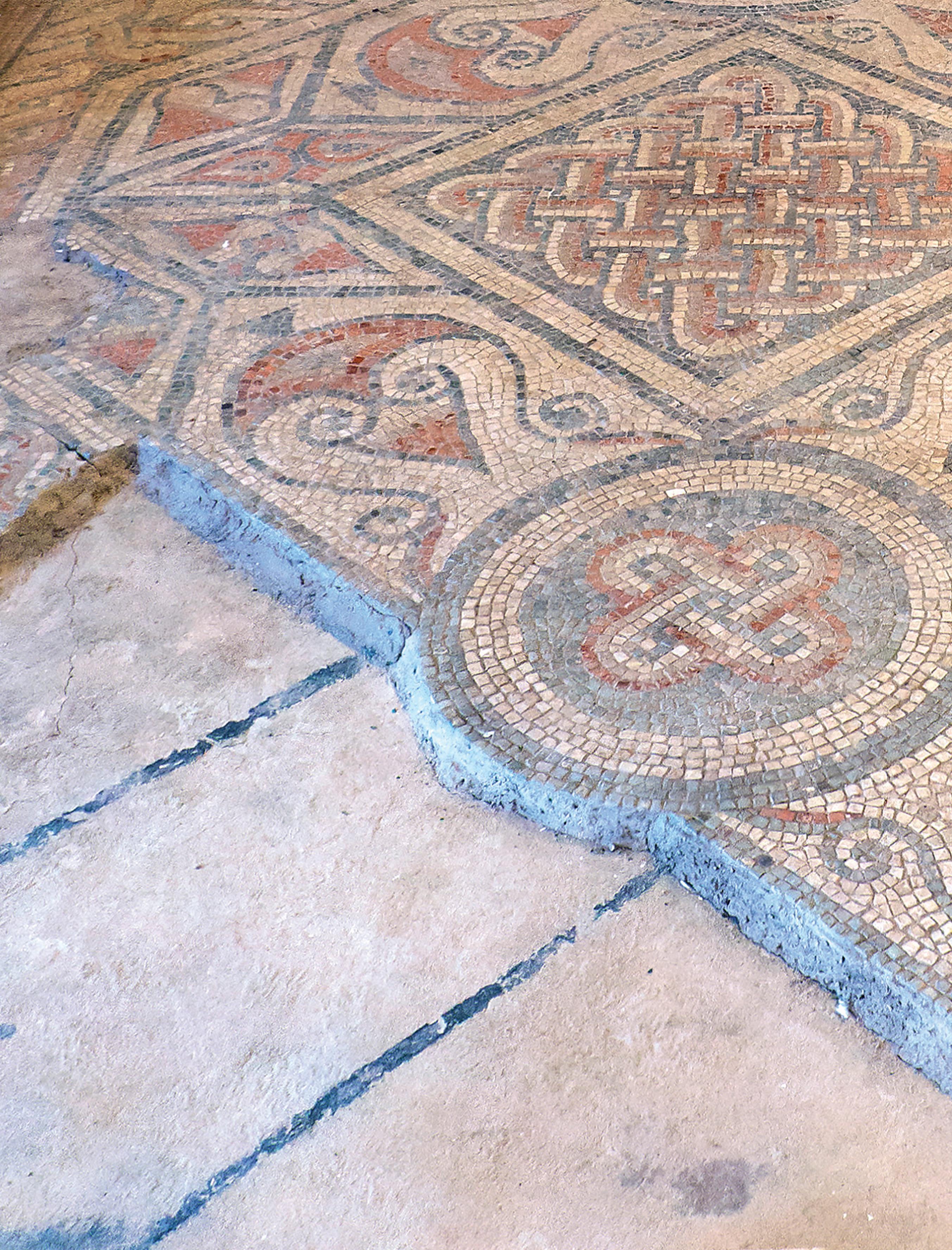
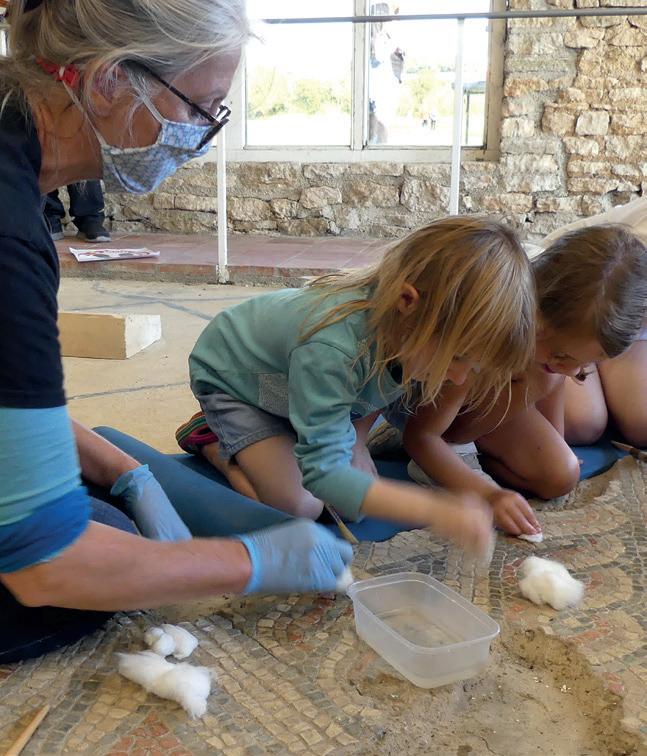
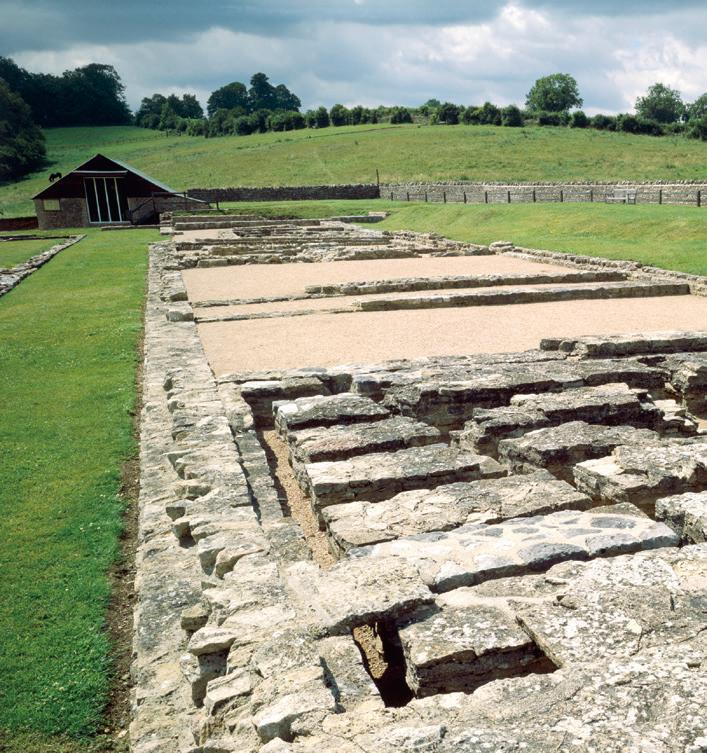
Previous page and background image The mosaic © David Parry This page, left to right Children help clean the mosaic; The Roman villa with mosaic room in the background © Historic England; Making the site Covid safe © Bryon Russell.
